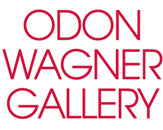Frederick Arthur Bridgeman
American
Frederick Arthur Bridgman was a well-known landscape and historical painter. He is most admired for his Orientalist subjects, including views of North Africa, in particular Egypt and Algeria, and his scenes from Ancient Egyptian history.
Following the death of his doctor father and amid the mounting tension before the Civil War, the Bridgmans returned to their native New England, settling in New York. Young Frederick showed artistic gifts and was apprenticed as an engraver to the American Banknote Company. He attended evening classes at the Brooklyn Art Association at the same time. He also studied at the National Academy of Design, where he met Harry Humphrey Moore and Thomas Hovendon. In these early years, Bridgman exhibited at the Brooklyn Art Association.
Bridgman travelled to France, where he visited Pont Aven, the artists’ colony in Brittany frequented by Paul Gauguin and Emile Bernard as well as a circle of American painters around the Philadelphian Robert Wylie (1839-1877). Bridgman also studied in Paris with Jean Léon Gérôme at the Ecole des Beaux-Arts. Bridgman made an important reputation for himself in France at the annual Paris Salons; in Britain, where he exhibited at the Royal Academy between 1871 and 1904, and in Germany, where he showed at the Grosse Berliner Kunst Ausstellung. His work was included in the American displays at the 1889 Universal Exposition held in Paris.
Bridgman’s great success culminated at the Paris Salons of 1877, 1878 and 1879 with a trio of paintings portraying life in the ancient Near East. Exhibitions of the artist’s work were held at the American Art Gallery in New York in 1881 and 1890. In 1881 Bridgman was elected a member of the National Academy of the United States. In 1889 he was given the honour of hanging five works in the Paris International Exposition. In 1907, he was made an officer of the Légion d’Honneur.




